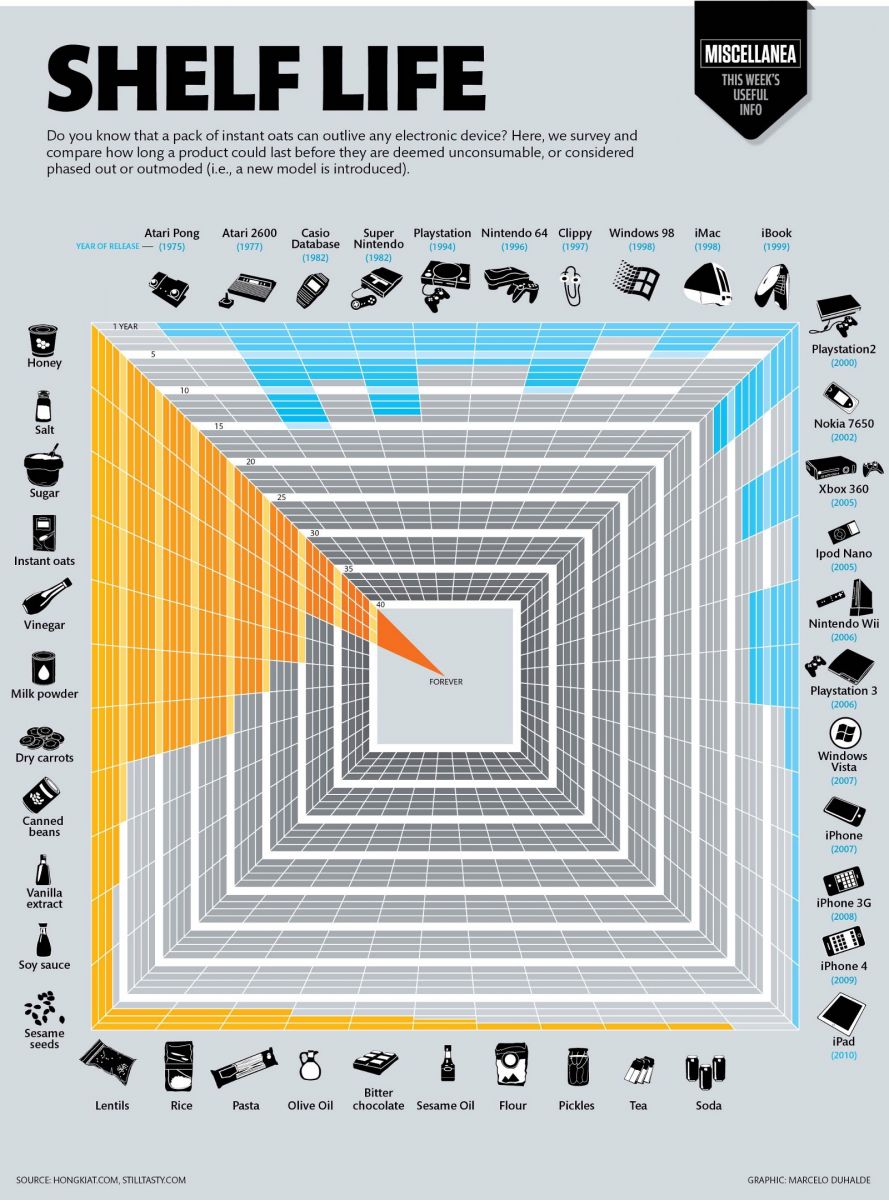Planned Obsolescence: The case for designing services with limited shelf life
This article by Paul Taylor included this interesting graphic which I thought may be of interest to subscribers.
Obsolescence by design is a major component of the business plans for just about all manufacturing companies. A friend of ours is the world’s largest manufacturer of the sensors in elevator doors. He has stated on more than one occasion that the business would not exist if the sensors did not fail after approximately 15 months, so that is how they design their products. It’s what keeps cashflow moving.
I have t-shirts I bought in Thailand in 2000 that look the same today as when I bought them and that is after very intensive use. We learned in China back in 2006 that if you pay £4 instead of £2.50 you can get the good quality shirts retail. In the scheme of things that doesn’t sound like much but in the fast fashion sector where margins are razor thin that price difference is a chasm and retailers do not want the cloths to stand-up to more than about 10 washes.
Audi and other German car companies now digitally mark their parts so generics or older versions cannot be coded into the car’s onboard computer. That forces consumers to buy the more expensive part from dealerships and to pay for the higher cost of having it fitted. Therefore, increasing the total cost of ownership is baked into the business models of most companies selling any form of hardware.
The reason I bring this up now is because of a number of conversations I’ve had over the last few weeks centring on electric vehicles. The mentality appears to be that people are happy to buy new products every few years because of the improvements they see in what is offered. They seem to accept that the abrupt decline in value for the original product they bought is inevitable.
A car is often the most expensive item most people buy after their primary residence so it is interesting so many seem willing to accept obsolescence of such a large purchase. There is no doubt that Tesla’s hold their value much better than other electric vehicles not least because of limited supply. However, that does not get around the fact that lithium batteries lose power the more they are recharged. That ensures a steady stream of repeat demand as an increasingly large number of new models approach the 100,000 mileage mark a few years from now. That has got to be factoring into the decision by so many car brands to give up on the internal combustion engine and especially diesel.



